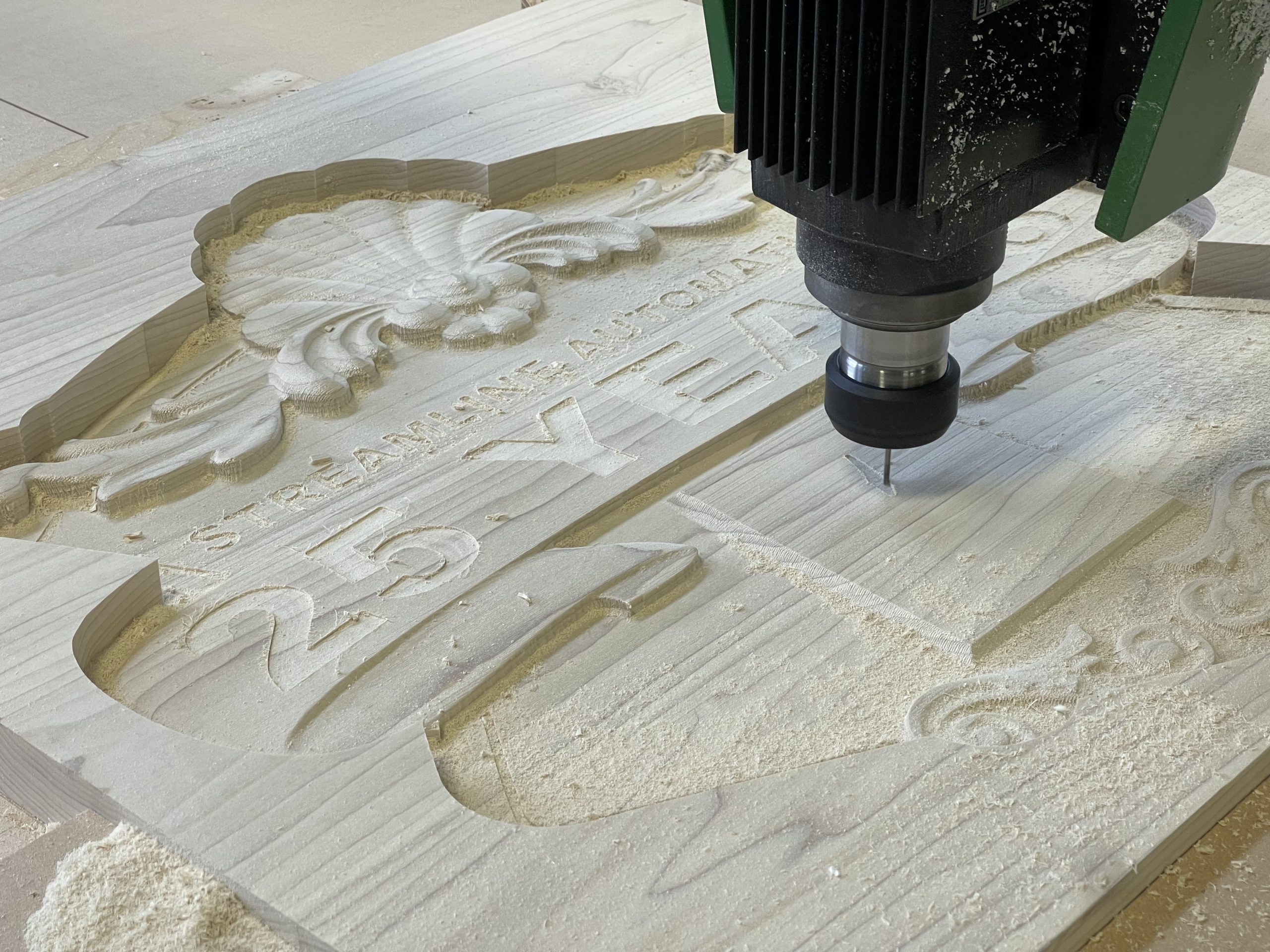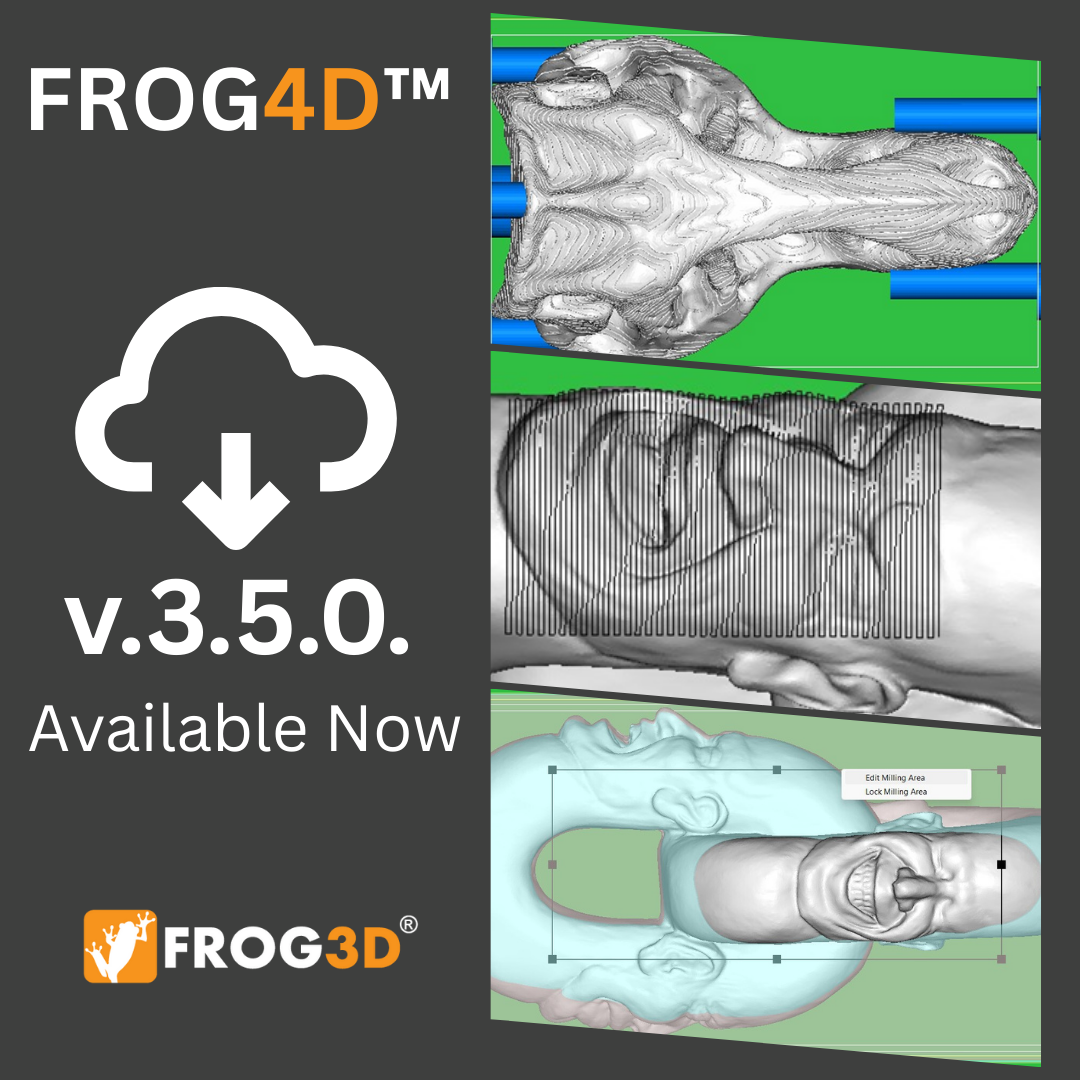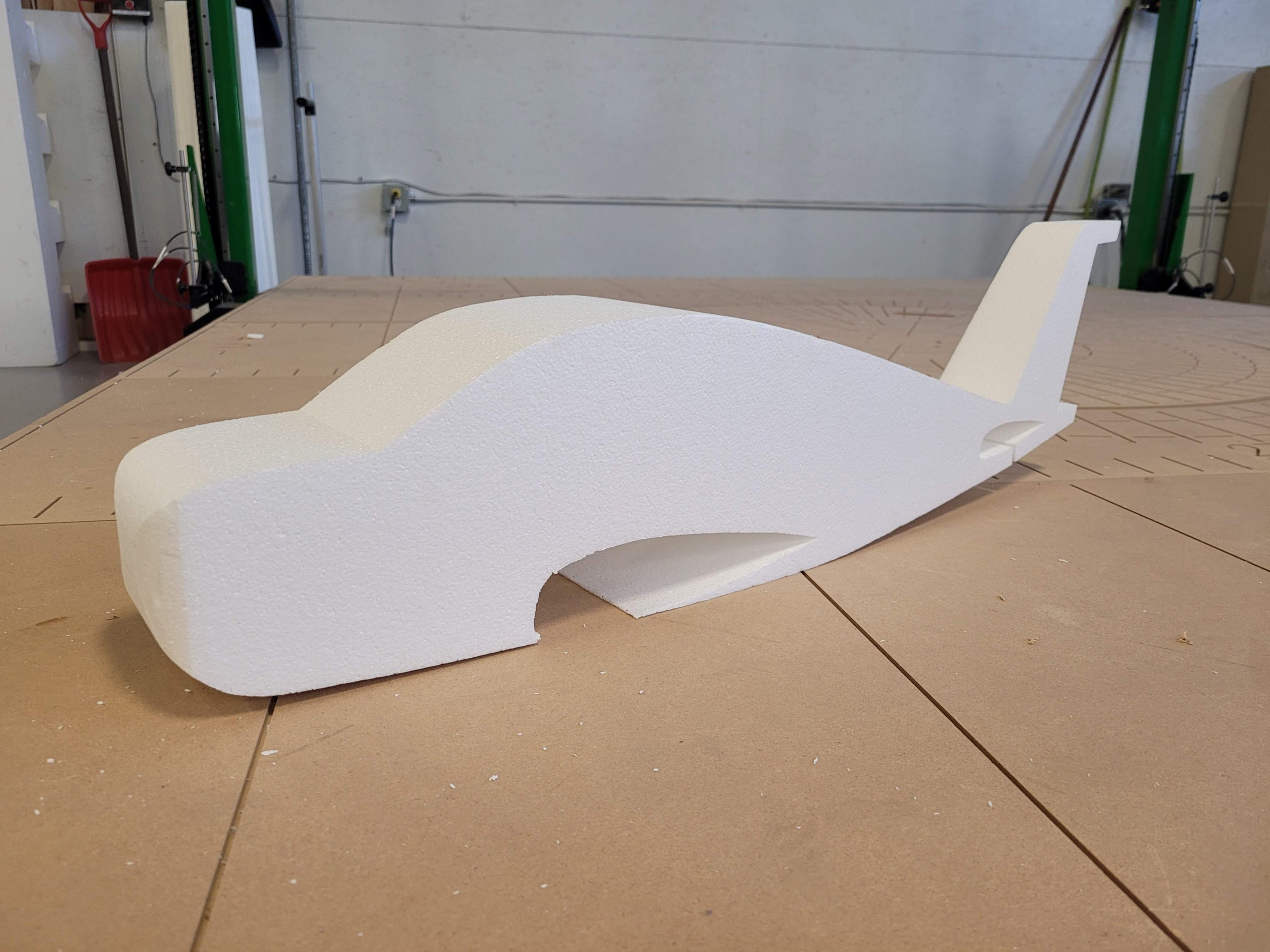3D printing technology has advanced at an extraordinary pace over the last decade, paving the way for innovative solutions across various industries. One of the most ground-breaking advancements is large-scale 3D printing, which enables the creation of massive and complex objects through a fully digitized process. This technology opens up new possibilities for architecture, engineering, entertainment, defense, manufacturing, and more. Large-scale 3D printing involves creating large and often complex objects or structures through additive manufacturing techniques. Unlike traditional 3D printers, which are designed for smaller items, large-scale 3D printers can produce much larger objects, ranging from several feet in size to entire buildings or even large industrial components. In this article, we explore the types of large-scale 3D printing technologies and examples of their uses in various applications.
Table of Contents
When To Consider Large-Scale 3D Printing?
Large-scale 3D printing involves the production of three-dimensional objects on a substantially larger scale than traditional 3D printing techniques. Utilizing large format 3D printers has several advantages, notably the ability to manufacture massive parts with reduced material, energy, time, and labor costs. Subtractive manufacturing methods have limited capacity to produce large and single components, whereas large-scale 3D printing enables designers to create single components efficiently. In addition, large-format 3D printing achieves enhanced print quality and enhanced resolution in complex details with minimized direct operator involvement, thus creating a system that is versatile and straightforward to deploy. The following are some contexts in which large-scale 3D printing proves its value:
Customized Manufacturing
When a product requires customization for end-user requirements, lead times are often extended with considerable costs. The specific nature of the design necessitates substantial resources for refinement, thus resulting in limited profit margins particularly more for single or low-volume sales. Designers can swiftly iterate and create complex geometries that meet precise customer specifications when leveraging large-scale 3D printing technology, thus reducing production and labor costs associated with traditional manufacturing techniques. This technology is particularly beneficial in personalized applications, such as the medical and pharmaceutical industries, where biocompatible materials such as titanium, HDPE, and ABS are commonly used. Large-scale 3D printing employs improved design flexibility and optimizes manufacturing processes, which increases accessibility and cost-effectiveness for customization to unprecedented levels.
Speed
Producing large parts usually requires extended lead times to produce when utilizing traditional manufacturing methods since they are either fabricated from large stock or assembled from bonded components. However, large-scale 3D printing enables the reduction of these lead times drastically and allows full parts to be manufactured sooner. The agility provided by these printers enables manufacturers to quickly adapt to changing market demands or trends and ensure they can meet customer needs and stay competitive. In agile or time-sensitive environments, designers can harness the enhanced manufacturing speed of large-scale 3D printing to accelerate iteration processes for faster innovation and development cycles, thus enabling companies to bring newer products to market more rapidly.
Lowered Cost And Labor Reduction
Large-scale 3D printing is a cost-effective alternative to other manufacturing methods such as injection molding or die casting, as these require substantial investments in tooling, core, mold, and pattern production. A primary benefit of large-format 3D printing is that it significantly reduces the number of parts to assemble, since more parts require more labor and potential weak spots in the product assembly. Large-scale 3D printing lowers costs by reducing the requirement for bonding and post-processing of finished parts. Additionally, 3D printing is a relatively automated process, as once the design is loaded and the print starts, it simply requires a 3D printing technician familiar with the specific machine, thus eliminating the need for highly trained technicians and skilled fabricators. Companies that seek to minimize overhead costs and optimize production can achieve significant savings with large-format 3D printing systems.
Applications Of Large-Scale 3D Printing
Large-scale 3D printing is transforming several industries by enabling the creation of large and complex objects with unprecedented speed and precision. The applications of large-scale 3D printing are endless, however, it is predominantly used for full-scale models, single-print components, large prototypes, and other applications that would otherwise be challenging and costly to produce with traditional manufacturing methods. The following are some applications of large-scale 3D printing:
Construction
In the construction industry, large-scale 3D printing is utilized to create building components such as walls, columns, and even entire structures. This technology reduces labor costs and time while allowing the possibility to produce innovative architectural designs.
Aerospace
3D printers can produce lightweight and high-strength components for aircraft and spacecraft for use in the aerospace industry, and can also create complex geometries that are challenging to achieve with traditional manufacturing methods. For example, Boeing has incorporated large-scale 3D printed parts such as structural components and interior elements into its aircraft, which reduces weight and improves fuel efficiency.
Entertainment
The entertainment industry utilizes large-scale 3D printing to produce props, sets, and costumes for movies, theater productions, and theme parks. 3D printing technology enables the rapid production of detailed and durable items to enhance visual experiences.
Defense
In the defense sector, large-scale 3D printing can be used to create components for military vehicles, equipment, and infrastructure. 3D printing technology allows the rapid production of custom parts and prototypes which enhances the capabilities of defense institutions, such as fulfilling on-demand manufacturing requirements in remote locations.
What Are The Types Of Large-Scale 3D Printing?
The choice of 3D printing technology depends on the materials used, the desired attributes of the finished product, and the specific application it is used for. The following are some of the most prominent types of large-scale 3D printing available:
Fused Deposition Modeling (FDM)
Fused Deposition Modeling (FDM) is a popular 3D printing technology that assembles objects layer by layer using thermoplastic materials. The process involves feeding an uninterrupted filament of plastic through a heated extrusion nozzle which melts the material and places it onto a build platform according to a programmed path. Each layer solidifies almost immediately and bonds with the previous layer to create a three-dimensional product. FDM is widely used due to its cost-effectiveness, ease of use, and the wide range of materials available, including ABS, PLA, PETG, and nylon, and is ideal for rapid prototyping and educational purposes. For large-scale applications, FDM printers are scaled up and support multiple nozzles to maximize printing speed and efficiency.
Stereolithography (SLA)
Stereolithography is renowned for its precision, versatility, and ability to create complex geometries. The process uses a vat of liquid photopolymer resin which is cured layer by layer utilizing an ultraviolet (UV) laser. The scalability of SLA is enabled by advancements in laser technology, resin formulation, and advanced software that delivers high-resolution prints across large dimensions. SLA is the ideal printing technology for industries that require detailed prototypes, custom molds, and functional parts, such as automotive, aerospace, and medical device manufacturing. SLA is a superb option for large and highly detailed prototypes that require tight tolerances and smooth surfaces, such as molds, tooling, patterns, medical models, and functional parts.
Selective Laser Sintering (SLS)
Selective Laser Sintering (SLS) is utilized in large-scale 3D printing technology to produce durable and complex parts with a high-powered laser that fuses powdered materials layer by layer to create solid structures. SLS eliminates the requirement for support structures which facilitates the fabrication of intricate geometries and linked components. SLS is highly versatile and capable of working with various materials such as plastics, metals, and ceramics, which makes SLS suitable for a wide range of applications including aerospace, automotive, medical devices, and consumer products to name a few.
Materials Used in Large-Scale 3D Printing
3D printing implements a diverse range of materials adapted to meet specific application requirements across various industries. The following are some of the commonly used materials in large-scale 3D printing:
Plastics
Plastics are easy to use, cost-effective, widely available, and offer versatility which makes them an ideal material for beginners and professionals in the 3D printing community. The following are some popular plastics utilized in large-scale 3D printing:
- Polylactic Acid (PLA): This is a biodegradable plastic that is derived from renewable resources and is popular for its ease of use, reduced warping, strength, and is ideal for prototyping and educational purposes.
- Acrylonitrile Butadiene Styrene (ABS): ABS is renowned for its toughness and impact resistance and it is mostly utilized in automotive parts, toys, and electronics.
- Polyethylene Terephthalate Glycol (PETG): PETG essentially combines the ease of PLA with the strength of ABS as it is durable, has high chemical resistance, and is less prone to warping.
- Nylon (Polyamide): This material is known for its strength, flexibility, and durability and is commonly used in functional parts, hinges, and gears.
- Thermoplastic Polyurethane (TPU): TPU is a flexible and rubber-like material that is durable and resistant to abrasion, and it is suitable for making bendable parts such as phone cases and wearables.
Resins
The use of resins can produce high resolution and detail, allow fast printing, and smooth surface finishes, and enable versatility. The following resins are popular in large-scale 3D printing:
- Standard Resin: This material is used in SLA printers and offers high detail and smooth surface finishes. It is ideal for producing prototypes, models, and dental applications.
- Tough Resin: This form of resin is designed to withstand mechanical stress and is used for functional parts that require higher impact resistance.
- Flexible Resin: This provides rubber-like flexibility and it is suitable for applications requiring elasticity.
Composites
Composites are highly beneficial in 3D printing because they enhance mechanical properties such as strength, stiffness, and durability by reinforcing polymers with materials such as carbon fiber or glass fiber. Composites offer a high strength-to-weight ratio, which makes them ideal for applications in aerospace, automotive, and defense where weight reduction is critical, and the following are commonly used composites in large-scale 3D printing:
- Carbon Fiber Reinforced Polymer: This composite combines the strength of carbon fiber with the flexibility of polymers.
- Glass Fiber Reinforced Polymer: Offers high strength and rigidity, and is typically used in automotive and sporting goods.
Bridge The Gap Between Imagination And Reality With Streamline Automation’s FROGPrint™ By Nexum
Streamline Automation’s FROGPrint™ by Nexum is a state-of-the-art 3D printer designed for large-scale production, high precision, and versatility. It is a key component of the FROG3D® system, known for its robust integration capabilities and ability to seamlessly operate alongside other system components to maximize productivity and efficiency. This printer is particularly suitable for industries requiring detailed and large-scale fabrication, such as automotive, aerospace, and architectural modeling.
FROGPrint™ by Nexum is engineered for robustness and stability in industrial environments and features a sturdy frame built from high-strength aluminum alloy which provides durability and reliability during prolonged use. The heated and adjustable platform optimizes adhesion and print quality across different materials and geometries. In addition, advanced vibration minimization systems are integrated to reduce disturbances during printing, ensuring consistent and precise output.
Print Resolution And Speed
The FROGPrint™ by Nexum boasts an exceptional print resolution of 20 microns which ensures high precision and fine detail accuracy. This resolution level is essential for applications where intricate details and smooth surface finishes are essential. In addition to high resolution, the printer also features a fast print speed which aids project timelines and keeps them within budget. The combination of high resolution and fast speed places FROGPrint™ by Nexum as a superior choice for prototyping and production environments.
Material Compatibility
One of the standout features of FROGPrint™ by Nexum is its compatibility with over 20 different print materials including PLA (Polylactic Acid), ABS (Acrylonitrile Butadiene Styrene), PETG (Polyethylene Terephthalate Glycol), PRO1, and NinjaFlex and easy turnkey functionality. FROGPrint™ by Nexum provides the freedom and flexibility to take on any project and its versatility enables users to select the best material for their specific application without being restricted by supplier limitations.
Nozzle Temperature And Extrusion Volume
FROGPrint™ by Nexum’s print head can reach temperatures up to 500 °C (932 °F) and this feature allows the printer to handle a variety of high-performance materials that necessitate higher processing temperatures. The nozzle heat-up time is less than 90 seconds which ensures minimal downtime during material changes. The maximum extrusion volume is up to 135 mm³/s which provides a high throughput for large-scale printing projects.
Dimensions
FROGPrint™ by Nexum’s build volume is a central aspect of its design. It offers substantial space for large-scale 3D printing projects, and has three models with the following build heights:
NX3500: Build height of 2000 mm (82.6 inches)
NX3000: Build height of 1500 mm (61.0 inches)
NX2300: Build height of 900 mm (36.2 inches)
All models have a build plate of 1000 mm diameter (39.4 inches) and provide substantial space for large parts and multiple smaller parts in a single print run, with net weights of 375 kg, 275 kg, and 245 kg, respectively, thus ensuring a solid and stable platform for precision printing.
Conclusion
At Streamline Automation, we are continually designing, building, and curating the equipment, components, and software for ease of use and ensuring maximum outcomes. Our systems are designed to work seamlessly with all other FROG3D® components, eliminating the hassles that come with non-integrated components. If you choose to invest in FROGPrint™ by Nexum, you will gain unhindered access to our dedicated and knowledgeable team of experts which you can use as a resource for help with any of your projects! Contact us today to get started.



